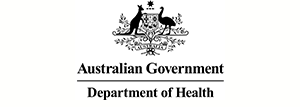Tackling childhood obesity with big data and dynamic simulation modelling

Status completed
Start Date
End Date
Overweight and obesity in Australian children and adolescents is a significant public health challenge. When continued to adulthood, it contributes significantly to Australia’s burden of chronic disease.
This project delivered a national decision support asset to inform investment decisions to reduce child and adolescent overweight and obesity, overall healthcare expenditure, and health system burden.
Introduction
The project used dynamic simulation modelling to bring together a variety of evidence sources, such as research, expert knowledge, practice experience and data, to capture the complexity of a problem. That model then simulated various policy scenarios to see which is more likely to deliver optimal outcomes.
Featured project resources
-
Advanced modelling shows a 20% sugar-sweetened beverage tax is a best buy for reducing child obesity in Australia
Resource category:Policy Briefs
Date -
Research seminar: Harnessing system science to tackle child and adolescent overweight and obesity
Resource category:Videos
Date -
How does adolescents’ behaviour affect their weight?
Resource category:Reports
Date -
The Western Sydney Adolescent Health Study: A pilot study of behavioural factors associated with overweight and obesity
Resource category:Reports
Date
Featured project news
-
The role of e-health interventions in treating adolescent overweight and obesity
News Category: Prevention Centre NewsDate -
All we want for Christmas is a sugar tax…
News Category: Prevention Centre NewsDate -
The value of prevention: childhood obesity early interventions
News Category: Prevention Centre NewsDate
About
Harnessing big data and dynamic simulation modelling to tackle child and adolescent overweight and obesity and unsustainable healthcare expenditure in Australia
Project titleWhat is the issue?
Overweight and obesity in Australian children and adolescents is a significant public health challenge. When continued to adulthood, it contributes significantly to Australia’s burden of chronic disease. Conditions such as cardiovascular disease, type 2 diabetes, musculoskeletal conditions/back pain and some cancers have been estimated to cost the Australian health system more than $21 billion annually.
Some effective public policy and program interventions to address overweight and obesity in children and adolescents do exist, but they may only show effective weight reduction in individuals at a point in time. Australia needs interventions that create sustained change at population level over the longer term.
Also, the impact of implementing such interventions simultaneously is unknown. With limited public resources to achieve government priorities, it is important to determine the most efficient, effective, and cost-effective combination of child and adolescent overweight and obesity interventions, where they should be targeted, with what intensity, their likely effect over the life-course, and potential savings in healthcare expenditure in the future.
How did the project address the issue?
This project built on a previous Prevention Centre project that explored influences on child and adolescent overweight and obesity and chronic disease.
Dynamic simulation modelling brings together a variety of evidence sources, such as research, expert knowledge, practice experience and data, to capture the complexity of a problem. That model is then used to simulate various policy scenarios to see which is likely to deliver optimal outcomes.
The project:
- Engaged with leading experts and drew on best available evidence and datasets to provide a more detailed representation of the dynamics of early childhood exposures and their impact on overweight and obesity across the individual’s life span
- Studied adolescent diet and physical activity behaviours using app-based data collection technology. Adolescents are a notoriously hard to reach and understudied ‘at risk’ group, but an important target of overweight and obesity prevention programs. Use of wearable technologies paired with mobile phones for data collection will provide an enormously rich source of real-time data that will give important insights into influences on adolescent food choices and physical activity behaviours
- Built a national decision support tool to inform best buys for tackling child and adolescent overweight and obesity and reducing the impacts of resulting chronic diseases
- Integrated existing data assets with the national decision support tool for child and adolescent overweight and obesity in partnership with relevant national and state digital health and big data agencies to automate the updating of the tool and secure its value as a long-term decision support asset.
What were the outcomes?
The work expanded on existing, local applications of dynamic simulation modelling in the ACT and NSW, and built capacity and infrastructure for embedding a data driven, interactive, national decision support tool within the Australian Government Department of Health. This tool can inform investment decisions to reduce child and adolescent overweight and obesity, overall healthcare expenditure, and health system burden.
By extending the existing dynamic simulation modelling work, this project delivered:
- A systems approach to developing new knowledge regarding the complex interplay of in-utero, early childhood and adolescent exposures, their impact on overweight and obesity, and chronic disease impacts over the life-course
- An interactive national decision support tool developed in partnership with expert stakeholders. This tool will be capable of informing best investments across multiple portfolios to reduce child and adolescent overweight and obesity and healthcare expenditure over the short and longer term
- Vital infrastructure, capacity and sustainability of the tool within the Australian Government Department of Health.
Relevance for practice
This project delivered a national decision support asset to inform investment decisions to reduce child and adolescent overweight and obesity, overall healthcare expenditure, and health system burden.
It also provided an opportunity for public-private partnership in the development of next generation decision support infrastructure, as well as stakeholder engagement, consensus building, and policy coherence around prevention efforts to reduce the significant financial, individual and social burden of the complex problem of child and adolescent overweight and obesity.
News and media
-
The role of e-health interventions in treating adolescent overweight and obesity
News Category: Prevention Centre NewsDate -
All we want for Christmas is a sugar tax…
News Category: Prevention Centre NewsDate -
The value of prevention: childhood obesity early interventions
News Category: Prevention Centre NewsDate -
World Obesity Day – Everybody needs to act
News Category: Prevention Centre NewsDate -
Impact of COVID-19 on the health and wellbeing of Australian adolescents
News Category: Prevention Centre NewsDate -
Investigators’ Forum and the future of chronic disease prevention
News Category: Prevention Centre NewsDate -
All About You: Using social media to engage youth and understand health behaviour
News Category: Prevention Centre NewsDate
Resources
-
Advanced modelling shows a 20% sugar-sweetened beverage tax is a best buy for reducing child obesity in Australia
Resource category:Policy Briefs
Date -
Research seminar: Harnessing system science to tackle child and adolescent overweight and obesity
Resource category:Videos
Date -
How does adolescents’ behaviour affect their weight?
Resource category:Reports
Date -
The Western Sydney Adolescent Health Study: A pilot study of behavioural factors associated with overweight and obesity
Resource category:Reports
Date -
A ‘what if’ tool to better understand complex health problems
Resource category:Videos
Date -
Partnering to develop a decision tool to reduce childhood overweight and obesity
Resource category:Findings Brief
Date -
Integrating big data and simulation models to support health decision making
Resource category:Videos
Date -
Five minutes with Professor Nate Osgood
Resource category:Videos
Date
Publications
Other publications
2018
- Roberts N, Atkinson J, McDonnell G, Osgood N, Wutzke S. Systems modeling and big data for non-communicable disease prevention. Oxford Bibliographies. doi:10.1093/OBO/9780199756797
Presentations
- Page A, Currie D, Peng C, Prodan A, Freebairn L. Systems science for public health. Preconference workshop. Australian Epidemiological Association annual Scientific Meeting. 23-25 October 2019. Brisbane, Australia.
- Atkinson J-A, Kruger K. Dynamic simulation modelling for health. ACT Health workshop. 16 October 2019. Canberra.
- Freebairn, L. Co-producing knowledge using participatory modelling for complex, health policy questions. Invited speaker at: Environmental Prediction Symposium. Symposium hosted by CSIRO. 4-5 June 2019. Canberra.
- Freebairn, L. Harnessing advances in simulation modelling to explore the complex issue of diabetes in pregnancy. Presentation at Diabetes in Pregnancy Forum hosted by ACT Health and University of Canberra. 17 August 2018. Canberra
- Freebairn L, Atkinson JA, Kelly PM and Rychetnik L. Participatory dynamic simulation modelling for knowledge mobilisation in public health policy. Abstract accepted for Sax Institute Knowledge Mobilisation Conference. 4-5 July 2018. Sydney
People
Lead investigators
Project team
-
Associate Professor Louise Freebairn
The University of Sydney, ANU -
Professor Nathaniel Osgood
University of Saskatchewan -
Dr Geoff McDonnell
The Sax Institute -
Simon Chiu
The Sax Institute -
Yang Qin
The Sax Institute -
Sithum Munasinghe
Western Sydney University -
Dr Ante Prodan Dr Ante Prodan has finished working with the Prevention Centre.
The Sax Institute -
Joe Carrello
The University of Sydney -
Professor Alison Hayes
University of Sydney -
Mark Heffernan Mark Heffernan has finished working with the Prevention Centre.
Dynamic Operations -
Dr Adam Skinner Dr Adam Skinner has finished working with the Prevention Centre.
The Sax Institute -
Associate Professor Kenny Lawson Associate Professor Kenny Lawson has finished working with the Prevention Centre.
The University of Sydney -
Dr Kurt Kreuger
Modeller -
Dr Sandro Sperandei
Western Sydney University





















